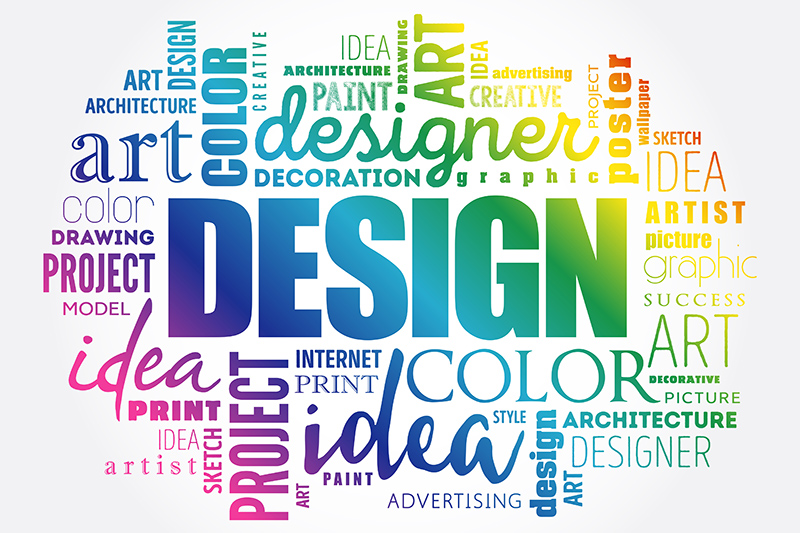Welcome to my post on essential skills for Adobe Illustrator! Whether you’re new to the software or looking to brush up on your skills, this post will cover the key techniques you need to know to get started with Illustrator.
Basic skills to learn for Adobe Illustrator include: creating and editing shapes, using the Pen tool to draw paths, working with layers and masks, using color and gradients, and using text and type tools.
With software as complicated as Illustrator it can be overwhelming knowing where to begin. I’ll highlight some of the most important features and concepts to tackle first to get you on your journey. If you find this post useful then check out Adobe Creative Cloud: Apps and Tools Explained. So, let’s get started!
Introduction to the Illustrator Workspace
The Illustrator workspace is a user interface that allows you to create, edit, and save vector graphics. If you are used to working with Adobe Photoshop, you will notice a few differences in Illustrator.
One of the main differences is that Illustrator uses vector graphics, which are made up of paths and anchor points, rather than pixel-based graphics like Photoshop. This means that you can scale Illustrator graphics without losing quality, whereas Photoshop graphics can become pixelated when they are enlarged.
Illustrator has a number of specialized tools for creating and editing vector graphics, such as the Pen tool and the Shape tools. It also works by combining and subtracting shapes to create new forms.
Additionally, Illustrator has a Layers panel where you can organize and manage the elements in your design, similar to Photoshop’s Layers panel.
Illustrator uses a concept called artboards. These are used to represent the different pages or screens in a document. Each art board can contain its own set of objects, and you can create multiple art boards within a single Illustrator document.
For more information check out the video below:
Creating and Editing Basic Shapes
To create a basic shape in Illustrator, you can use the Shape tools located in the Tools panel on the left side of the workspace.
There are several Shape tools to choose from, including the Rectangle tool, the Ellipse tool, and the Polygon tool. To create a shape, simply select the desired tool and click and drag on the artboard to create the shape. You can also hold down the Shift key while dragging to create a perfect circle or square.
To edit a basic shape, you can use the Direct Selection tool to select and move individual anchor points or use the Transform panel to adjust the shape’s size, position, and rotation.
You can also use the Shape tools to combine shapes by using the Add, Subtract, Intersect, and Exclude options in the Pathfinder panel.
Working with Layers and Masks
In Adobe Illustrator, layers and masks are powerful tools for organizing and manipulating artwork.
Layers allow you to separate different elements of your design into separate, editable sections. This makes it easier to work on specific parts of your design without affecting the rest.
Masks, on the other hand, allow you to hide or reveal parts of a layer or group of layers. They allow you to work non-destructively, meaning that you can edit your changes later. To use a mask, you first create a shape or path that defines the area you want to reveal or hide.
Then, you apply the mask to a layer or group of layers by selecting the mask and the layers you want to affect and clicking the “Create Clipping Mask” button in the Layers panel.You can then edit the mask shape to change which parts of the layers are visible.
Understanding masks can be a little complicated so check out the video below for a more detailed explanation:
Using the Pen and Pencil Tools for Drawing and Tracing
The Pen and Pencil tools in Adobe Illustrator are essential for creating and editing vector artwork.
The Pen tool allows you to create precise, custom-shaped paths by clicking to add anchor points and adjusting the curvature of the path with handles.
The Pencil tool, on the other hand, is more freeform and allows you to draw rough, organic shapes with a more hand-drawn feel. Both tools can be used to create new artwork or to trace over existing artwork to convert it into vector format.
When using the Pen or Pencil tools, it’s important to pay attention to the stroke and fill colors, as well as the stroke weight and other attributes, to ensure that your artwork looks the way you want it to. You can also use the various options in the Pen and Pencil tool settings to customize the behavior of the tools and get the results you need.
Applying Color and Gradients to Objects
In Adobe Illustrator, you can apply color and gradients to objects in a number of different ways. One way is to use the Fill and Stroke color swatches in the Tools panel or the Properties panel.
To apply a solid color to an object, you can simply select the object and then click on the Fill color swatch to choose a color from the color picker or a swatch from the Swatches panel. You can also apply gradients, which are transitions between two or more colors, to an object by clicking on the Gradient swatch in the same way.
Another way to apply color and gradients is to use the Color Guide panel. This panel allows you to choose from a range of harmonious color schemes based on a selected color. You can then apply these colors to your objects by dragging and dropping them onto the object.
In addition to applying color directly to objects, you can also use the Appearance panel to add multiple fills and strokes to an object, as well as apply effects such as transparency and blending modes. This can create more complex and interesting visual effects and give you greater control over the appearance of your objects.
For more information about gradients, head over to Adobe’s documentation.
Using Text and Type Tools
Unsurprisingly, the text and type tools in Adobe Illustrator allow you to add and edit text in your designs.
The Type tool allows you to create a text frame and type out your text. You can then use the Character and Paragraph panels to adjust the font, size, color, and other attributes of the text.
The Area Type tool works similarly, but allows you to create a text frame that adjusts to the amount of text you enter. This is useful for creating blocks of text that flow within a fixed area, such as in a brochure or poster.
The Type on a Path tool allows you to place text along a path, such as a curved line or circle. This can be useful for creating logos or other designs with text that follows a specific shape. The Vertical Type tool allows you to create text that is oriented vertically, which can be useful for certain design layouts.
In addition to the Type tools, Illustrator also has a range of other text-related tools and features, such as the Character and Paragraph styles, which allow you to save and reuse text formatting options, and the Text Wrap feature, which allows you to wrap text around other objects. These tools and features can help you create professional-looking text effects and save time in doing so.
Transforming and Manipulating Objects
In Adobe Illustrator, there are several tools and techniques available for transforming and manipulating objects. Some of the main tools and features include:
- The Transform panel: This panel allows you to adjust the size, position, and orientation of an object by entering specific values or using the handles on the bounding box.
- The Scale tool: This tool allows you to resize an object by dragging the handles on the bounding box or by entering specific values in the Transform panel. You can choose to scale the object uniformly or non-uniformly.
- The Rotate tool: This tool allows you to rotate an object by dragging the rotation handle or by entering a specific angle in the Transform panel. You can also use the Reflect tool to flip an object horizontally or vertically.
- The Free Transform tool: This tool combines the functionality of the Scale, Rotate, and Reflect tools into a single tool, allowing you to perform multiple transformations on an object at once.
- The Warp tool: This tool allows you to distort an object by dragging the points on the bounding box or by using the options in the Warp Options panel.
- The Envelope Distort tool: This tool allows you to apply a predefined shape to an object, distorting it to fit the shape of the envelope.
These are just a few examples of the tools and techniques available and by combining them, you can create a wide range of effects.
Exporting and Saving Your Work
Exporting your work from Illustrator allows it to be used by other programs. There are many different file formats available for saving and exporting your work, each with its own set of features and limitations.
The most popular vector file formats ensure that the file is still editable (unlike a raster format such as JPEG) and include the following:
- Adobe Illustrator (.ai): This is the native file format for Adobe Illustrator, and it is a proprietary format that is only supported by Adobe Illustrator and other Adobe software.
- Scalable Vector Graphics (.svg): This is a widely supported, open standard file format for vector graphics that can be viewed in web browsers and other software.
- Portable Document Format (.pdf): This is a popular file format for sharing documents that maintain their formatting and layout across different devices and software. Adobe Illustrator can export PDF files that include vector graphics.
- Encapsulated PostScript (.eps): This is a file format for transferring graphics between applications and platforms. It is often used for printing and publishing.
By exporting and saving your work in the appropriate format, you can ensure that your project is accessible and usable by others. It will be a requirement if you intend to use your work for other services such as print-on-demand or self-publishing.
Conclusion
If you’re coming to Illustrator for the first time from Photoshop then it can be a bit of an adjustment to the different way that objects are created and edited. However, Illustrator is an industry-standard piece of software that is worth putting the time into learning if you’re in need of creating vector graphics for your side-hustle or project.
If you found this post useful then check out Adobe Creative Cloud: Apps and Tools Explained.
Featured image: dizain / stock.adobe.com
Adobe, Illustrator and Photoshop are either registered trademarks or trademarks of Adobe in the United States and/or other countries.








